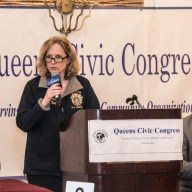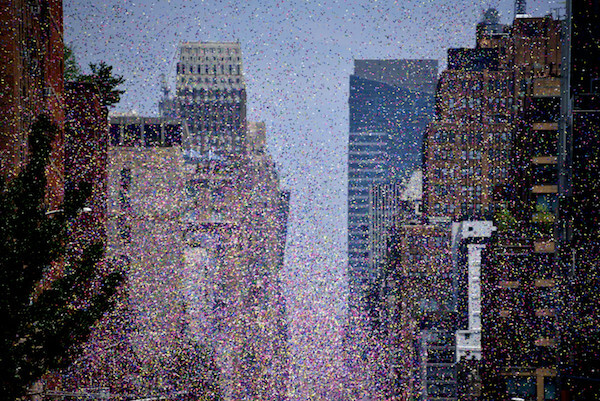Some movies change the cultural landscape, while others simply bring in the box office bucks. Either way, these movies always saddle the studio that made them with the pressure of the dreaded sequel. There are great sequels and not so great sequels – for every Empire Strikes Back, there’s a Weekend at Bernie’s II – but making a sequel is always a roll of the dice, no matter the source material.
The Museum of the Moving Image in Astoria reopened recently after three years of renovations and re-imaginings. Founding director Rochelle Slovin and trustee board chairman Herbert S. Schlosser, and with the design acumen of architect Thomas Leeser—has added some 47,000 square feet of space to the city-owned building that has housed the museum since 1988.
“We wanted to add some glamour to the building,” said Slovin, in the museum’s main theatre standing in front of an enormous multicolored curtain created by textile designer Cindy Cirko. “We are in a glamour field and felt as if we never communicated that as well as we might.”
Charged with the task of adding that glamour to the Museum’s reboot was Leeser Architecture; an internationally acclaimed studio, specializing in everything from museums and exhibitions to institutional and residential projects.
Leeser is used to mammoth undertakings as his architectural studio was one of only five international firms selected to design the Olympic Village for NYC2012, the city’s push for the 2012 Olympics. For the Moving Image project, Leeser sought to capture the essence of the moving image itself.
“We most of all wanted to capture the ephemerality of the moving image,” he said. “This begins with the front entrance, designed of semi-transparent mirrored glass – a part-visual, part-material screen, where reflection and vision are overlaid as if in a form of physical suspension.”
Leeser said that stepping into his completed project was like walking through the very schematics he pored over time after time. For visitors though, Leeser wanted them to feel as though they were stepping into a moving image – and an otherworldly one at that.
The new film theater is built with the ability to project in any format, from 16mm to 70mm and 3D digital. Blue vacuum-formed acoustic panels clad the theater’s walls and the seating area is slightly elevated, giving visitors the appearance of being in an enclosure that is floating above the theater.
“Film-going is an imaginary voyage,” said Leeser. “Entering the theater is not unlike entering an alien’s spaceship.”
Besides a preternatural theater, the Museum will also house art exhibitions both ongoing and rotating. From now through July 15 visitors entering the museum will be greeted by “City Glow,” cyclical narrative video by Japanese artist Chiho Aoshima in collaboration with New Zealand based animator Bruce Ferguson.
In the new Video Screening Amphitheater, adjacent to the grand staircase, visitors will see acclaimed independent filmmaker and artist Martha Colburn’s film “Dolls vs. Dictators.” Exhibited through April 10, the film was created using Colburn’s photographs of the Museum’s collection of dolls, toys and other merchandise.
And through June 12, museum visitors can step out of reality and into “Real Virtuality” – six installations created by artists and technologists with backgrounds in architecture, painting, filmmaking, video art and software engineering. These installations employ video game engines, motion- and position-tracking, stereoscopic (3D) digital video and simulated worlds that extend, augment or disrupt the physical environment of the Museum space.
And the Museum’s core exhibition is the ongoing “Behind the Screen,” which aims to immerse visitors in the creative process of making moving images. The space – completely reconceived and upgraded – features over 1,400 artifacts form 19th century optical toys to more recent video games. The new objects on display tell the story behind the stories – the ever-evolving way that movies are made, marketed and shown.
The re-imaging of the Museum lends credence to New York’s reputation of being the center of the art and entertainment world. It is fitting that the home of some of the most iconic landmarks in the world is now the home of icons from the film industry.
“Institutions like the Museum of The Moving Image help make New York City the cultural Mecca of the world,” said Councilmember and Cultural Affairs Chairman Jimmy Van Bramer. “Queens is fortunate to have such an innovative and educational resource like the Museum of The Moving Image in our backyard and I am so pleased to see its long awaited expansion and renovations become a reality.”
The Museum is also a great destination for class field trips and parties. Log on to www.movingimage.us or call 718-784-0077 for more information about screenings and upcoming events.
































